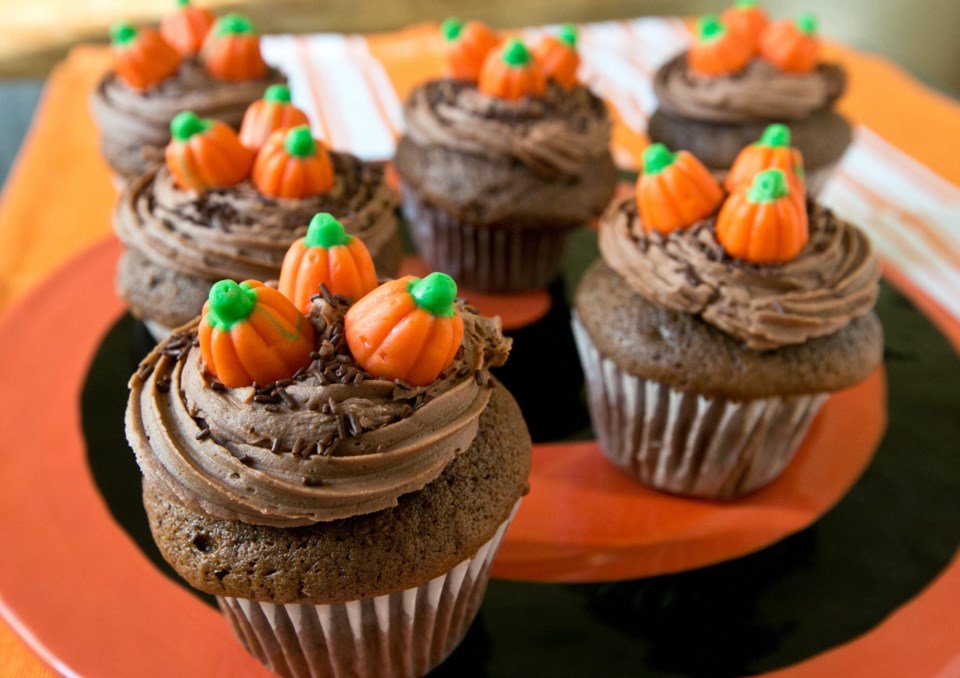 I enjoy reading about food history and learning how some dishes got their unusual names. I frequently learn something new about foods that have been around for a while.
I enjoy reading about food history and learning how some dishes got their unusual names. I frequently learn something new about foods that have been around for a while.
That happened again last week when I stretched out on my couch and flipped through some of my old baking books. As I turned the pages, I kept coming across recipes given the handle “devil’s food” and wondered why.
With a name like that, I mused, on Sunday mornings a preacher might tell his parishioners to avoid eating them, as there must be some sin associated with doing so.
After doing some research on the term, it turned out something named “devil’s food” was indeed sinful, but not in a bad way. In fact, it’s something one might bake after church to serve for dessert after Sunday supper, a treat the whole family would enjoy and feel blessed to have.
According to the Encyclopedia of American Food and Drink, baked goods named devil’s food, such as cakes made with dark chocolate, are so-called because they are supposedly so rich and delicious that they must be sinful to eat, although the book says the association is clearly made with humour.
According to the food history website foodtimeline.org, cakes with those qualities in late 19th-century cookbooks were not called devil’s food; they were most often generically named chocolate cake. They were likely called that because most North American chocolate cake recipes in those days were simple white or yellow cakes with chocolate icing. Chocolate was expensive back then and not widely available; as a consequence, it was used sparingly.
When the 20th century rolled around, chocolate was more widely available and was melted and blended into cake batters. Sources suggest that in the early days what differentiated a devil’s food cake batter from regular chocolate cake batter was that devil’s food contained a greater proportion of chocolate.
In the 1931 edition of The Joy of Cooking, author Irma S. Rombauer states that when the larger amount of chocolate is used, it is a black, rich devil’s food.
Although there’s no clear evidence of this, it seems someone might have come up with the name devil’s food to contrast it with another popular baked good, angel food cake.
For example, The American Century Cookbook says the name might have been a play on opposites. The book says devil’s food was dark and rich, while angel food was light and airy.
These days, there are all sorts of recipes for devil’s food cakes, and no two seem to be exactly the same. Some batters use cocoa instead of hard chocolate, some fold in beaten egg whites, while others do not, and yet others mix in dense and tangy things, such as sour cream or buttermilk.
The only thing that does seem consistent is that they are chocolatey, delicious and almost feel as if they have an old-fashioned taste.
Devil’s food is a name also given to other baked goods with those qualities, such as today’s cupcake recipe. The recipe yields 24 cupcakes and could be something you bring to a Halloween party. The cupcakes also freeze well, so if 24 are too many for you, enjoy some now and freeze the rest for another time.
Devil’s Food Cupcakes
Moist, chocolatey and devilishly good cupcakes topped with an easy-to-make icing that you spread or pipe on. The Halloween-themed candies decorating the cupcakes are sold in the bulk-foods section of some supermarkets.
Preparation time: 50 minutes
Cooking time: 25 minutes
Makes: 24 cupcakes
For the cupcakes:
3 oz unsweetened chocolate, chopped
1/2 cup boiling water
1 tsp baking soda
1 cup butter, at room temperature
2 cups granulated sugar
2 tsp pure vanilla extract
3/4 cup sour cream
5 large eggs
3 cups all-purpose flour
For the icing:
1 cup butter, at room temperature
2 cups icing sugar
1/4 cup cocoa
• chocolate sprinkles, to taste (optional)
• Halloween-themed candies, to taste (optional)
Place the chocolate in a medium heatproof bowl (mine held 2 1Ú2 cups) and set over a pot of just simmering water. Heat the chocolate, stirring occasionally, until just melted, and then remove from the heat.
Place the boiling water in a second bowl and whisk in the baking soda. Now whisk this mixture into chocolate, and then set aside until needed.
Set an oven rack in the middle position. Preheat the oven to 350 F. Line the two, 12-cup muffin tins with large paper liners.
Place the 1 cup butter for the cupcakes, sugar and vanilla in the bowl of your stand mixer fitted with the paddle attachment. Beat until the mixture is well combined and lightened a little.
Beat in the eggs, one at a time, and when all have been added, scrape down the sides of the bowl. Continue beating five minutes, until the mixture has lightened and is pale yellow.
Whisk the sour cream into the melted chocolate mixture until completely smooth. Add the flour and chocolate mixture, alternating between a third of each, to the mixing bowl. Scrape down the sides of the bowl and mix one minute more, until the batter is smooth.
Divide and spoon the batter into the paper cups. Set the pans side by side on the middle oven rack. Bake 25 minutes, or until the cupcakes spring back when very gently touched in the centre. Set cupcakes on a baking rack and cool 30 minutes. Remove cupcakes from the tins and cool to room temperature.
Place the 1 cup butter for the icing in the cleaned bowl of your stand mixer. Sift the icing sugar and cocoa into the bowl. Beat until well combined, smooth and lightened. Pipe or spread the icing on the cupcakes. If desired, decorate each cupcake with some chocolate sprinkles and Halloween candies. Set cupcakes in the refrigerator to set the icing. Cover with plastic wrap until ready to serve. Cupcakes can be made many hours before serving.
Note: Chocolate sprinkles are sold in the baking supply aisle of most supermarkets.
Eric Akis is the author of The Great Rotisserie Chicken Cookbook. His columns appear in the Life section Wednesday and Sunday.



